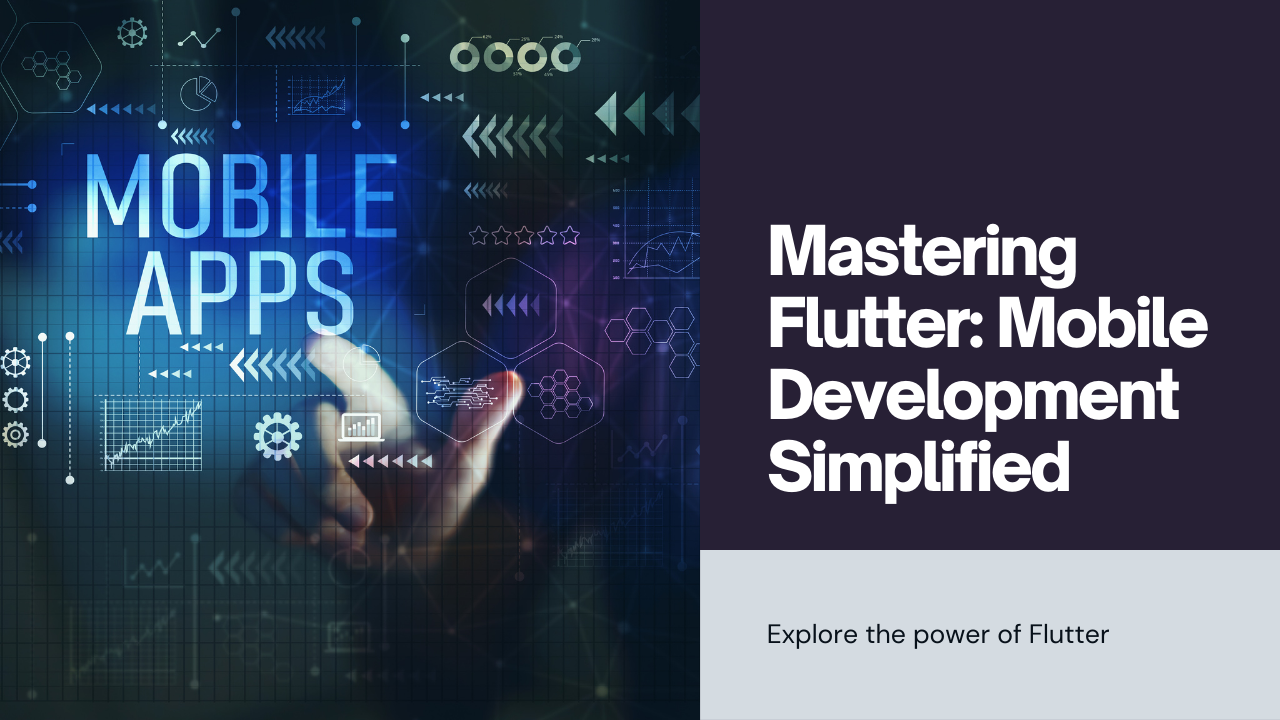In the rapidly evolving landscape of mobile app development, Flutter has emerged as a prominent player, offering a unique approach to building high-performance, cross-platform applications. Developed by Google, Flutter enables developers to create natively compiled applications for mobile, web, and desktop from a single codebase. This blog explores what makes Flutter stand out, its core features, advantages, and how it is shaping the future of mobile development.
What is Flutter?
An Overview of Flutter
Flutter is an open-source UI software development kit (SDK) created by Google. It provides a framework for building applications with a rich user interface and high performance across multiple platforms using a single codebase. Flutter’s primary focus is to simplify the development process while offering flexibility and control over the user interface.
Key Components of Flutter
Flutter comprises several core components:
- Flutter Framework: Provides a set of tools and libraries for building UIs, handling animations, and managing state.
- Dart Programming Language: Flutter applications are written in Dart, a language also developed by Google, which offers features like strong typing and just-in-time compilation.
- Flutter Engine: A low-level implementation that renders graphics and handles platform-specific interactions.
Core Features of Flutter
1. Hot Reload
One of Flutter’s standout features is Hot Reload:
- Real-Time Updates: Hot Reload allows developers to see changes in their code instantly without restarting the app, significantly speeding up the development process.
- Efficient Iteration: This feature facilitates rapid experimentation and iteration, enabling developers to quickly test and refine their UI.
2. Rich Widgets
Flutter’s rich set of customizable widgets is another key feature:
- Pre-Built Widgets: Flutter provides a comprehensive collection of pre-designed widgets that follow both Material Design (for Android) and Cupertino (for iOS) guidelines.
- Custom Widgets: Developers can create highly customizable widgets to match their app’s unique design requirements, offering flexibility in UI design.
3. Single Codebase for Multiple Platforms
One of the main advantages of Flutter is its ability to target multiple platforms:
- Cross-Platform Development: Flutter allows developers to write code once and deploy it across Android, iOS, web, and desktop platforms.
- Unified User Experience: This capability ensures a consistent user experience across different devices and operating systems.
4. High Performance
Flutter is designed for high performance:
- Compiled Code: Flutter compiles code directly to native machine code, which results in smooth and fast performance.
- Efficient Rendering: The Flutter engine uses Skia, a high-performance graphics library, for rendering, ensuring high-quality visuals and animations.
Benefits of Using Flutter for Mobile Development
1. Faster Development Time
Flutter accelerates the development process in several ways:
- Hot Reload: As mentioned earlier, Hot Reload drastically reduces development time by allowing developers to instantly view changes.
- Pre-Designed Widgets: With a wide array of pre-designed widgets, developers can quickly assemble and customize their user interface without starting from scratch.
2. Cost Efficiency
Using Flutter can lead to cost savings for businesses:
- Single Codebase: By enabling cross-platform development, Flutter reduces the need for separate development teams for iOS and Android, cutting down on development costs.
- Reduced Maintenance: A single codebase simplifies updates and maintenance, as changes need to be implemented only once.
3. Enhanced User Experience
Flutter’s capabilities contribute to a superior user experience:
- Smooth Animations: The framework supports fluid animations and transitions, enhancing the overall user experience.
- Consistent Design: The ability to design and maintain a consistent look and feel across platforms ensures a seamless experience for users.
4. Strong Community Support
Flutter benefits from a vibrant and growing community:
- Active Development: The Flutter community actively contributes to the framework’s growth, with frequent updates and improvements.
- Extensive Resources: Developers have access to a wealth of resources, including tutorials, documentation, and third-party libraries, which support effective development.
Challenges and Considerations with Flutter
1. Limited Third-Party Libraries
Although Flutter has a growing ecosystem, it still faces challenges with third-party libraries:
- Library Availability: Some specialized libraries or plugins may not be available in Flutter or might have limited functionality compared to native solutions.
- Community Contributions: The availability of libraries often depends on community contributions, which can vary in quality and support.
2. Learning Curve
Dart, the programming language used by Flutter, may present a learning curve:
- New Language: Developers familiar with other programming languages might need time to adapt to Dart, though its syntax is relatively easy to grasp.
- Adapting to Flutter’s Paradigms: Understanding Flutter’s unique approach to UI design and state management may require additional learning.
3. Platform-Specific Integrations
While Flutter supports cross-platform development, some platform-specific integrations can be complex:
- Native Features: Accessing certain native functionalities or platform-specific features may require writing custom native code or using platform channels, adding complexity to the development process.
- Performance Optimization: Ensuring optimal performance across all platforms may require fine-tuning and adjustments specific to each platform.
Best Practices for Flutter Development
1. Design for Performance
To achieve the best performance with Flutter:
- Optimize Widget Use: Minimize unnecessary widget rebuilds and use Flutter’s performance profiling tools to identify bottlenecks.
- Efficient State Management: Implement effective state management solutions to handle data changes and UI updates efficiently.
2. Utilize Packages and Plugins
Leverage Flutter’s extensive package and plugin ecosystem:
- Explore Packages: Use Flutter’s package repository (pub.dev) to find pre-built solutions that can enhance functionality and save development time.
- Custom Plugins: For unique requirements, consider developing custom plugins or using platform channels to integrate with native code.
3. Follow Flutter’s Guidelines
Adhering to Flutter’s best practices ensures high-quality apps:
- Follow Design Guidelines: Utilize Flutter’s design guidelines for creating consistent and aesthetically pleasing UIs.
- Testing: Implement thorough testing strategies, including unit tests, widget tests, and integration tests, to ensure app reliability and performance.
The Future of Flutter in Mobile Development
1. Continued Growth and Adoption
Flutter’s future looks promising with continued growth and adoption:
- Enterprise Use: More enterprises are adopting Flutter for its cross-platform capabilities and cost efficiency, leading to widespread use in commercial applications.
- Innovation: Google and the Flutter community are likely to introduce new features and improvements, further enhancing its capabilities.
2. Expansion Beyond Mobile
Flutter’s reach extends beyond mobile app development:
- Web and Desktop Applications: Flutter is expanding to support web and desktop applications, offering a unified development experience across different platforms.
- Integration with Emerging Technologies: Future updates may include better integration with emerging technologies, such as augmented reality (AR) and virtual reality (VR).
Conclusion
Flutter has established itself as a powerful tool for mobile app development, offering numerous benefits such as faster development times, cost efficiency, and a consistent user experience. While it faces some challenges, including limited third-party libraries and a learning curve, its strengths make it a compelling choice for developers looking to create high-performance, cross-platform applications. As Flutter continues to evolve and expand, its role in the app development landscape is set to grow, shaping the future of mobile and beyond.







